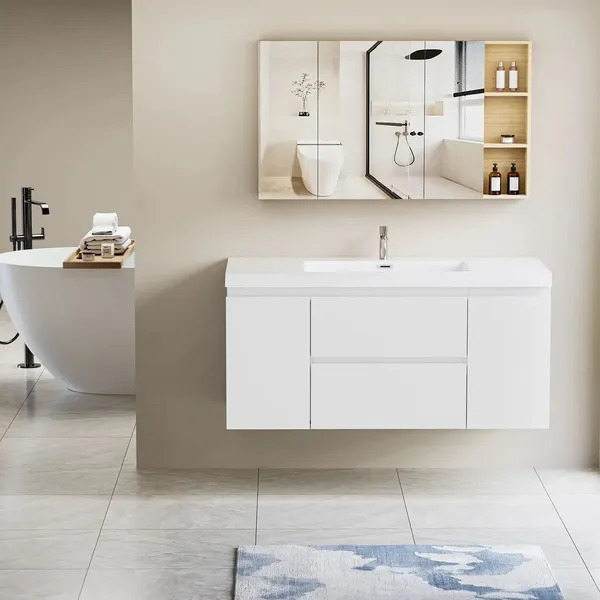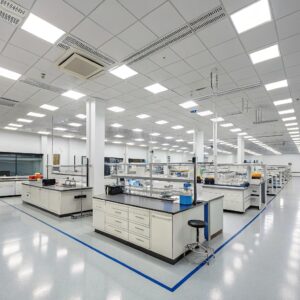Table of Contents
Choosing the right countertop for your bathroom or laboratory is more than just a design decision—it’s about functionality, durability, and meeting specific needs. While bathroom vanity countertops and laboratory countertops may appear similar, they serve vastly different purposes. This guide breaks down their key differences to help you make the best choice for your space.
Understanding Bathroom Vanity Countertops
Bathroom vanity countertops combine practicality with aesthetics, serving as both a functional surface and a design focal point. They are designed to handle daily grooming tasks, water exposure, and common bathroom products.
Key Features:
- Materials: Granite, marble, quartz, and laminate are popular choices.
- Properties: Moderate moisture resistance, aesthetic appeal, and ease of cleaning.
- Durability: Built to withstand water, soap, and toiletries but not harsh chemicals or extreme temperatures.
- Design: Available in a wide range of styles, colors, and finishes to complement bathroom décor.
Laboratory Countertops: Built for Performance
Laboratory countertops are engineered for demanding environments where chemical resistance, durability, and safety are paramount. Aesthetics take a backseat to functionality in these high-performance settings.
Key Features:
- Materials: Stainless steel, phenolic resin, and epoxy resin are commonly used.
- Properties: Exceptional resistance to chemicals, heat, and physical stress.
- Durability: Designed to endure heavy equipment, frequent sanitization, and intense daily use.
- Design: Focused on practicality, with limited aesthetic options but superior performance.
Key Differences Between Bathroom and Laboratory Countertops
Aspect | Bathroom Vanity Countertops | Laboratory Countertops |
Functionality | Designed for daily grooming tasks and water exposure. | Built to withstand chemicals, heat, and heavy equipment. |
Durability | Moderate durability for residential use. | High durability for extreme conditions. |
Materials | Granite, marble, quartz, laminate. | Stainless steel, epoxy resin, phenolic resin. |
Cost | More affordable, with a range of price options. | Higher cost due to specialized materials. |
Design | Aesthetically focused, with diverse styles. | Functional, with limited design options. |
How to Choose the Right Countertop
Consider the following factors when making your decision:
- Primary Use: Will the countertop face water exposure or harsh chemicals?
- Durability Needs: Does your space require high resistance to heat, chemicals, or physical stress?
- Budget: Are you looking for affordable options or willing to invest in specialized materials?
- Design Preferences: Do you prioritize aesthetics or functionality?
- Maintenance: How much upkeep are you prepared to handle?
For bathrooms, focus on water-resistant materials that align with your design vision. For laboratories, prioritize chemical resistance and durability over appearance.
Conclusion
Whether you’re upgrading a bathroom or equipping a laboratory, understanding the differences between these countertops ensures you make the right choice. Bathroom vanity countertops offer style and practicality for home use, while laboratory countertops deliver unmatched durability and functionality for demanding environments. By considering your specific needs, budget, and design preferences, you can select a countertop that provides lasting value and performance.




